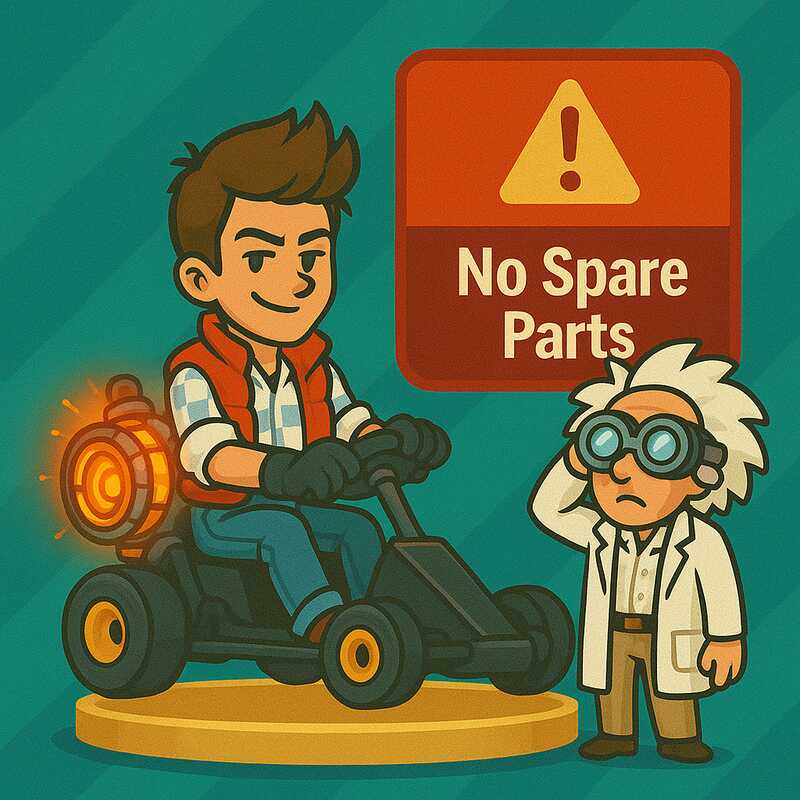
It's 2025. Stop Bringing a Golf Cart to a Formula 1 Race
Typegres: A Unified Theory of Data Access
2025: The F1 of Developer Velocity
If you’re building an app, you’ve signed up for a race. The winning metric isn’t runtime performance – it’s developer velocity. Your lap time is how fast you can ship a feature.
In 2025, the world has converged on an elite setup:
- Your world-class driver is TypeScript – your FE and BE stack in one and the most advanced type system to gain mass adoption
- You’re on the F1 racetrack of databases: Postgres – the de-facto platform for serious applications.
So what’s the bottleneck? It’s not the driver or the track. It’s the data layer – the car you bring to the race. Every feature you ship is, at its core, just a wrapper around a SQL query or mutation.
You have an elite driver and a world-class circuit. You should be winning. So why does it feel like your product velocity is stuck at 25 mph?
Because your data layer thinks it’s playing Mario Kart
2025: Mario Kart on F1
Let’s look at the cars we’ve been told we have to use.

The ORM: The Golf Cart
ORMs got us on the road. They gave us object mapping, a decent developer experience, and migration handling.
But they’re golf carts. You trade the expressive power of SQL for a toy interface that requires yet another bespoke mental model to operate.
Verdict: You’ll get to the finish line… days after the race is over

The Query Builder: The All-Terrain SUV
The query builder was a big step up. It’s versatile and solves the critical problem of dynamic query construction, acting as the macro system SQL was always missing.
But its core principle – database agnosticism – forces you into the lowest common denominator of SQL. That might have made sense in 2015. But now it’s 2025. Postgres won, and it packs over 3000 built-in functions and advanced features that are just sitting there unused. You’re preparing for an off-road trip that will never happen while getting lapped on the racetrack every day.
Verdict: A solid compromise in 2015, a delusional handicap in 2025.

”Just use SQL”: The DIY 1980s Model
Let’s be clear what “Just use SQL” really means: it’s a bait-and-switch. You’re not using the full, expressive power of the SQL language. You’re forcing your modern, sophisticated driver (TypeScript) to do something primitive: clumsily stitching together raw SQL strings.
This is like telling your F1 driver to pull over mid-race, get out, and service the car himself. You’ve fired the entire pit crew of modern tooling for dynamic composition and ergonomic relation handling.
Verdict: A world-class driver with a toolbox instead of a steering wheel.

The Mad Scientists: The Nuclear Fusion Go-Carts
The most ambitious solutions argue the problem is so fundamental, we need a brand new car. PRQL designs a more ergonomic syntax and logic engine. EdgeDB designs a better data model. They are both brilliant, visionary projects.
But this isn’t a test run; it’s a race. You’re learning a new query language from scratch. You roll into your pit stop and Doc Brown is scratching his head: he doesn’t have the parts you need. You’ve abandoned an entire proven ecosystem on a hunch.
Verdict: Maybe it’s the future – But you’ve got a race to win today.
Typegres: The Race Car
Typegres starts from a single conviction: that you should use the full power of the tools you’ve already chosen. It’s a translator, not another abstraction that takes the best of all worlds without their compromises:
- From ORMs, first-class relations
- From Query Builders, dynamic composition
- From Postgres, every function, operator, and statement – fully typed (no SQL strings!)
- From PRQL, composable, fluent API philosophy
- From EdgeDB, graph-like querying in a relational model
The key insight: translating Postgres to Typescript. Not ditching SQL like ORMs. Not thinking in strings like query builders. Instead, operating at the level of SQL expressions – turning every Postgres type and function into fully-typed, idiomatic TypeScript building blocks.
The result is an expressive, ergonomic API, showcased by its killer feature: class-based models that naturally model computed columns and relations.
class Driver {
performanceScore() {
// Extend your models with business-logic, allowing you to think
// conceptually, instead of in terms of raw database columns.
return this.podiums.divide(this.racesStarted);
}
bestLapAt(track: string) {
// Relations are first-class in Typegres – use them anywhere
// you’d use a query:
return LapTime.where((l) => l.driverId.eq(this.id).and(l.track.eq(track)))
.orderBy((l) => l.time, { asc: true })
.limit(1);
}
}
const topDrivers = await Driver.where((d) => d.racesStarted.gt(50))
.orderBy((d) => d.performanceScore(), { desc: true })
.limit(10)
.select((d) => ({
name: d.name,
score: d.performanceScore(),
// Access every Postgres built-in like `age()` as a method
// with full auto-complete
careerSpan: d.firstRaceAt.age(),
bestMonacoLap: d.bestLapAt("Monaco").select((l) => l.time),
}));And the best part? The entire chain above is fully type-safe, and compiles to a single, efficient SQL query.
Winning the Next Decade: A New Challenger Approaches
The last decade’s data layers optimized for breadth: works with every database. The next decade demands depth: embrace your stack, extract maximum power.
This maxim is even more important in the age of AI coding. Everyone now has a fleet of robot F1 drivers – Claude Code’s, Cursor’s, and Copilot’s. Instead of one driver, you have dozens racing 24/7. Choosing the right car is now by far the single, highest leverage choice you can make.
The paradox is that LLMs are world-class SQL experts but need the tightest leash possible. They have encyclopedic knowledge and can construct great queries, but one hallucination brings down production.
Typegres provides the perfect balance: the freedom of unfettered PostgreSQL with the constraints of deep, compile-time type checking. It’s the racing machine that lets your AI driver perform at its absolute peak – without sending it into the wall.
TypeScript and Postgres already won.
It’s time you brought a race car.
Calling Early Adopters & Contributors
Typegres is in early preview. The vision and core architecture are solid, but it’s not production ready yet.
- Take it for a spin: Try it live at typegres.com/play
- Join the discussion: Share feedback and ask questions on GitHub.
- Follow the build: Star the repo to watch the progress.